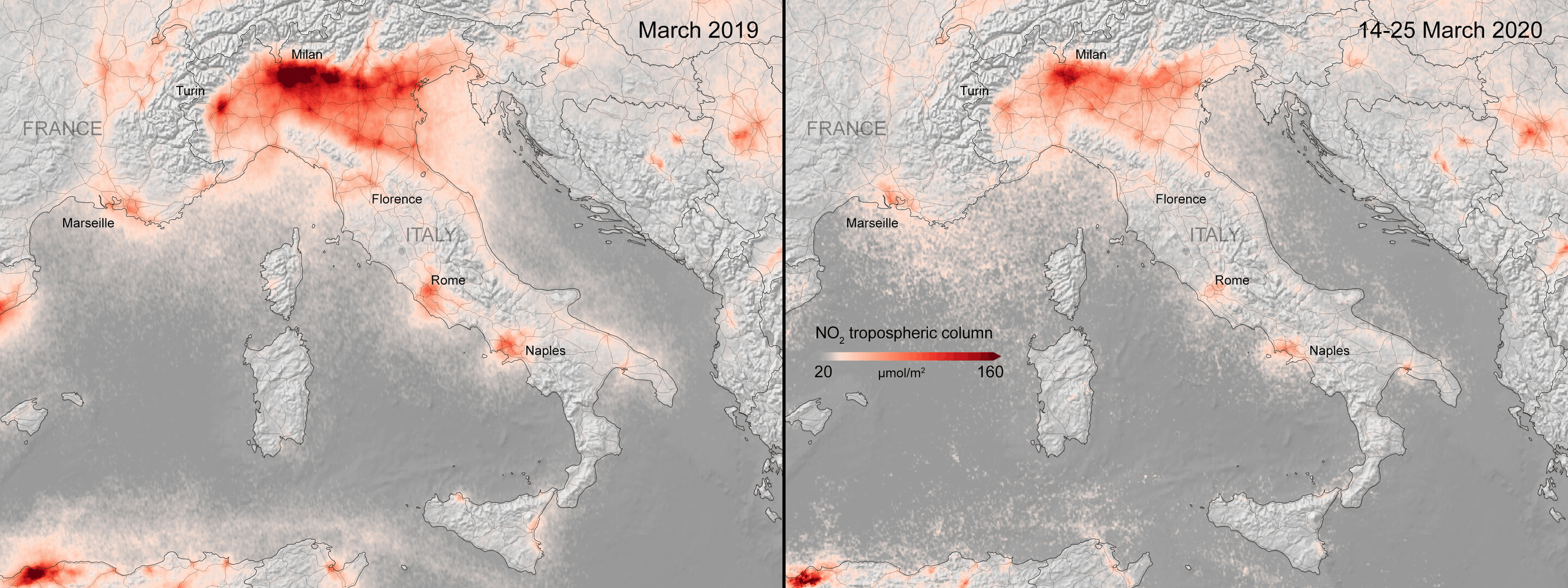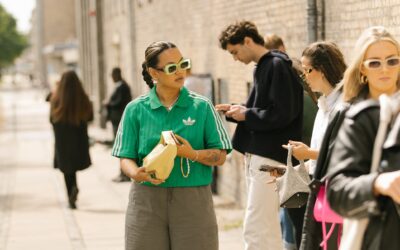The Urgency of Digitalisation: Innovation and Sustainability
The urgency of digitalisation in the fashion industry is being fast tracked. COVID-19 is pushing the industry in a direction that it was already walking towards, only now, it is a sprint. Digitalisation can be used by companies to change up their working habits and excel in the current climate however, there are long term benefits to digital solutions that must be taken into account as well. When offices re-open, photoshoots are re-organised and fashion weeks are re-scheduled, it is likely that the industry will be re-modelled, as it endures the aftermath of this global scale quarantine. Consequently, we may truly be about to enter a new era of fashion.
Radical Innovation
The relentless expansion of digitalisation is becoming more and more central for the success of fashion brands and the industry has experienced a significant paradigm shift in recent years. According to The State of Fashion 2019 (1) previously stable and thriving firms are facing imminent threats from several angles, due to the rise of advanced technology and changing consumer demands. The clash between fashion and technology, driven by speed and data, has set the stage for a new revolution in the global industry. Therefore, firms must realise radical innovation and disrupt themselves, by implementing innovative digitalisation, if they want to survive this revolution which is set to be characterised by sustainability. The State of Fashion 2020 (2) reported that to thrive in the present environment, companies must get digitalisation right and address those consumers who are increasingly concerned by the climate-change agenda: “based on our executive survey, the words on everyone’s lips are sustainability, digitisation, and innovation”.
Creating Lasting Change
As fashion brands begin to radically digitalise during this pandemic, it is vital that companies continue to project forwards beyond the uncertainty that the next few months have in store. In order to use digitalisation to genuinely provoke lasting, positive change, there are two essential concepts to consider: innovation and sustainability. Innovation reflects how relevant a brand is, sustainability measures a brands integrity. Fashion brands have been using creative methods of digitalisation in both innovative and sustainable ways over the past few years. Brands like Dior have used augmented reality for try before you buy solutions in makeup and accessories. Additionally, virtual reality clothing has been retailed by brands, such as Carlings, which enhance their consumers’ social media presence in a more sustainable way. The industry has been dabbling in the most current digitalisation tools technology companies have to offer. Now, in light of this global crisis, we can use these modern, creative initiatives to be leaders in battling world wide challenges.
Climate Change: Responsibility and Accountability
The fashion industry is notorious for its unsustainable practices. The UN Environment Programme (3) reported that: The fashion industry produces 10% of global carbon emissions, which is more than all international flights and maritime shipping. It produces 20% of global wastewater, and textile dyeing is the second largest polluter of water globally. As consumers continue to buy more and more, if nothing changes, by the year 2050 the fashion industry will use up to 25% of the world’s carbon budget. But, this is hardly news. The industry has been aware of these dark statistics for some years now, and numerous fashion brands across the world have already put vast sustainability measures in place.
Recent statistics from the European Space Agency (4) show how social lockdown is having a positive effect on the air pollution of major European capital cities. Factors such as a decrease in travel and the temporary closing of factories are directly linked to the fashion industry, and they are also significant reasons as to why there has been a decrease in air pollution, according to the BBC (5). The maps below show how both France and Italy have seen a decrease in pollution, specifically nitrogen dioxide concentrations.
If more evidence such as this continues to be proven, and as companies are continued to be forced to find new ways to operate during both lockdown and during the aftermath of this crisis, a unique opportunity is apparent. Digitalisation used in a radically innovative way can not only keep business running smoothly in this pandemic, but can also create a forceful push in sustainable reform across the industry. This is an opportunity to set a new standard of how we produce and consume fashion. Not only because we know we have to prioritise sustainability, but because we have no other option but to use digital solutions to operate business.
Sustainable Innovation in Practice: Digitalising the Cat Walk
In February 2018, Gerrit Jacob, a graduate designer at Central Saint Martins, collaborated with Three Mobile and Rewind, a London based technology company, to create the world’s first 5G runway. To learn more about how this form of digital innovation can help and inspire fashion brands in their sustainability endeavours, VOCAST’s UK Lifestyle Researcher spoke to Rewind.
As an immersive technology company, what do you believe are some of the benefits that fashion brands can gain from digital innovation to help them reach their sustainability goals?
“From virtual showrooms to digital instead of physical sampling, immersive technologies—virtual reality (VR), augmented reality (AR), and mixed reality (MR)—can slash the waste generated by physical fashion both behind-the-scenes in the fashion industry, and in our future digital wardrobes.” Sol Rogers, CEO and Founder of REWIND.
Your work in fashion week was hugely successful, what do you hope this will lead to for the future of sustainable fashion innovation and breaking outdated practices?
“Hopefully, it will open the eyes of the fashion world to what is possible. 5G connectivity teamed with XR devices will entirely upend how buyers, press, and consumers interact with fashion. For an industry that is highly creative, the opportunities here are endless—the only limit is your imagination. Plus, virtual reality cuts out the need to travel, so the excessive carbon footprint of the industry can be addressed too.” Sol Rogers, CEO and Founder of REWIND.
Finally, we are currently in unknown territory with many countries, communities, and companies going into social lockdown, what do you believe immersive technology can offer the fashion industry in terms of staying connected and keeping businesses running and growing?
“COVID-19 has clarified the need for technology that facilitates an alternative to in-person fashion shows, presentations, and showrooms. Immersive technologies have the potential to connect us in new ways, enable effective remote collaboration in the design phase, and even offer an alternative to the traditional catwalk.” Sol Rogers, CEO and Founder of REWIND.
A New Era of Fashion
The way that the fashion industry has been heading over the last few years in undoubtedly towards a sustainable and digital future, but the current global crisis is forcing the industry to take digitalisation to the next level. Radical innovation is essential to continue a brands’ business growth and upkeep global relevance. Digitalising traditional practices is possible, if brands start actively working with creative technology. As social lockdown continues all over the world, the initial evidence is telling us that this decrease in a fast-paced society is beneficial for the planet. Therefore, let us challenge ourselves to use the immense powers of digitalisation to the best of our ability. The industry is currently going through the perfect opportunity to not only push sustainable fashion further than ever before, but to create a brand new era of fashion. An era where art and technology push the boundaries of what fashion represents and how we consume it, in an innovative and sustainable way.
References: Photo credit: Copenhagen Fashion Week image bank. Image credit: European Space Agency. (1) McKinsey. Retrieved April 6th. Online The State of Fashion 2019: A year of awakening. (2) McKinsey. Retrieved April 6th. Online. The State of Fashion 2020: Navigating uncertainty. (3) UN Environment Programme. Retrieved April 3rd. Online. Putting the brakes on fast fashion. (4) European Space Agency. Retrieved April 3rd. Online. Coronavirus lockdown leading to drop in pollution across Europe. (5) BBC News. Retrieved April 3rd. Online. Coronavirus: Air pollution and CO2 fall rapidly as virus spreads.
Georgina is the Lifestyle Researcher for the US and UK Market at VOCAST, responsible for both American and British fashion and lifestyle research. Along with her work at VOCAST and studies at Copenhagen Business School, she is passionate about conscious fashion reform in the industry.
SIGN UP TO OUR NEWSLETTER
Get free knowledge on how to optimize your B2B marketing & new product releases.
RELATED POSTS
Beyond the Aesthetic: The Emergence of Stylists as Influencers
In the realm of interior design, stylists, recognized for turning creative visions into captivating editorial and commercial projects, are increasingly emerging as key influencers on social media. The rise of digital platforms has substantially redefined their roles,...
A Closer Look at Copenhagen Fashion Week 2024: Insider’s Insight
Copenhagen Fashion Week is for many the culminating gathering of Scandinavian creatives. During the two weeks per year, one Spring/Summer edition and one Autumn/Winter edition, a global swarm of creatives flock around the Danish capital to get the details on the...
Sweat and Style: How Fashion Brands Can Ride the Sports Wave
We’ve seen it time and time again: another collaboration between a fashion brand and a notable figure in the sports and fitness world. Whether it be your favorite influencer dressed head to toe in athleisure or loyal fans sporting (pun intended) their favorite...







